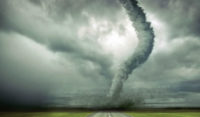The Florida Department of Environmental Protection (FDEP) and the St. John's River Water Management District will use light detection and ranging (LiDAR) to create predictive models that measure storm surges and flooding.
As climate change continues to affect coastal communities, the National Oceanic and Atmospheric Administration’s (NOAA) National Geodetic Survey (NGS) Remote Sensing Division (RSD) Coastal Mapping Program (CMP) aims to protect vulnerable communities from rising sea levels and climate risk.
NOAA selected Dewberry, a professional services firm, to collect and process airborne topobathymetric lidar and digital camera imagery.
These data will enable accurate and consistent measurement of the national shoreline and update the bathymetry in the Indian River Lagoon. The project covers more than 600 square miles of Florida’s east coast and will be used to better assist in planning for increased resilience in coastal communities experiencing rising sea levels. National shoreline data from this survey will provide critical baseline information to update nautical charts; define the nation’s territorial limits, including the exclusive economic zone; and manage coastal resources.



